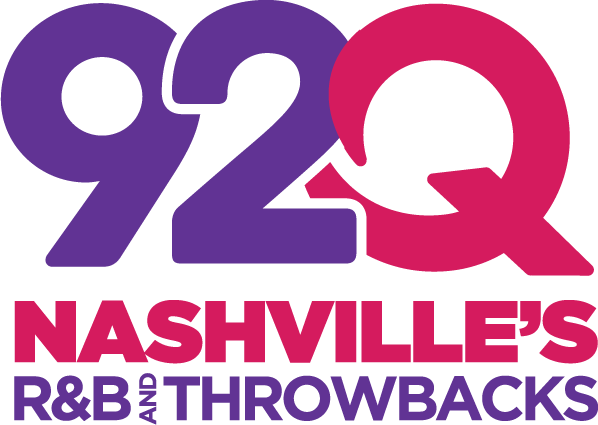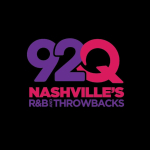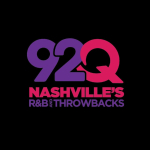From politics and food to the expression of wealth, hip-hop music has shaken up the way America sees itself. Since the ’80s, the genre has defined the zeitgeist of cool to impressionable young gens the world over. From the beginning, the essence of high fashion in hip hop culture was expressed in the form of massive gold chains and shimmering diamond pendants—and has evolved into an explosion of blinged-out rings, bracelets, Grillz, and chains to become the standard-bearer of success in the rap game.
Ice Cold, an enlightening docu-series from executive producers Migos, Kevin “Coach K.” Lee, and Pierre “P” Thomas, uses the prism of hip hop and jewelry to explore deeper issues around racial inequity and the American dream.
The series delivers deep insights from legendary MC’s, such as Slick Rick, Lil Yachty, A$AP Ferg, Lil Baby, and City Girls, among others, about the merits of flexing bling; while also showcasing contrasting viewpoints from De La Soul, Talib Kweli, and others who played a crucial part of the Black consciousness movement in the rap game who refused to wear gold chains. It also features a carousel of jewelry characters who masterfully drip and maintain the bling of the rap cartel.
The hip-hop docu-series is masterfully shot and framed, both visually and culturally. It’s a pictorial Rosetta Stone of sorts about the secretive world of hip hop jewelers and the flamboyant culture that created the demand and explores the ideologies that gave birth to the ostentatious jewelry we see today. Beyond the bling, the viewer is asked to contemplate the double standards that have plagued ideas about Black self-expression, innovation, and financial responsibility.
Exhibited as a collection of four short episodes, Ice Cold explores hip-hop’s ability to reimagine and transcend established notions of wealth, status, superiority, and the sheer resilience of hip-hop culture. Below, EBONY checks in with the documentary’s director Karam Gill and the famed celebrity jeweler (and one of the film’s producers) Ben Baller, who is featured in the series, to dish about rap’s fascination with jewelry and the culture that drives the game.
EBONY: Can you tell us how Ice Cold came to be made?
Karam Gill: It was a four-year process actually to make this. It went through so many different versions. We were looking at it as a feature film at one point, and it kind of went down the road and ultimately became a series. The hip-hop and jewelry story is so complex because there’s so much nuance to telling that story. There’s so much responsibility, right? From a thematic standpoint, you can’t tell the story of hip hop and jewelry without telling the story of the American dream and racial perception. We have to talk about a lot of these larger themes and ideas that exist in our culture.
So we realized that it didn’t work as a feature. It needed to be a series because there are so many topics. The jewelers are craftsmen; they’re their own subjects. A lot had to be separated to allow the project to be what it needed to be for our culture and society.
Ben, talk to me about what it means to you that this film is out right now.
Ben Baller: Ice Cold is so many years in the making, you know, shout out to Peter and Sacha over at Mass Appeal. I was like, man, I’m with the right people!
I knew the new school. It wasn’t anything getting Lil’ Baby. Getting to the jewelry people who think they are on the same level of competition as me—I’m not worried about that. And the funny thing is, people who don’t like me, or who think I hate them, they’re going to be in this movie. They get to tell their side of the story, to say that their best jeweler, or whatever it may be. I think later when they find out, they’re going to be like, “Wait, Ben produced this movie? Why would he have me in it? Because look, dog- I’m not about that f*** s***. You gotta hear every side.”
We can’t just look at hip hop. We have to look at the whole history of jewelry. If we can’t go back to the Egyptian days of King Tut, Slick Rick, and all the stuff that matters in pop culture or Black culture then I didn’t want to be a part of it.
“The Queen’s jewels in Buckingham Palace are no more flamboyant than some of the ones worn by the bigger stars in the rap world.”
KARAM GILL
Karam, tell us, specifically, how did you and Ben get connected initially? And, then what was the process of making the movie?
KG: Some of the producers, had brought back Ben into the mix on the earlier side of when we were working on the project. I think Ben’s a really great dude and somebody who has so much knowledge about jewelry. He is really a craftsman in his own right. He was able to provide just a lot of insights, and break down simple things [for the film]. Having a bank of knowledge of someone like Ben, who spans so many generations as well as a top jeweler, was great in terms of just maintaining accuracy and authenticity. He was making sure we’re exploring the right things and telling it the right way.
What was the most fun part of making this film for you?
KG: When I got to create the museum from scratch and really kind of take all these legendary artists and paint them as these Renaissance figures like kings and queens. We built that space from scratch—it was designed by my production designer, myself and we really designed it in a way that we wanted to. We wanted that beyond it being a cool stylistic thing- you wanted to make a statement. For so long, we’d go to museums and look at white European monarchs that conquered Black and Brown’s countries painted on the wall. You’re made to look up at them and glorify them. So the concept beyond it being a cool stylistic thing was really to make a statement like, “Yo, hip hop should be glorified and looked at in the same way.” Because the Queen’s jewels in Buckingham Palace are no more flamboyant some of the ones worn by the bigger stars in the rap world.
Ultimately did you find these artists to be materialistic? Who did you find them to be in their pursuit of high-end jewelry?
KG: I think that’s a great question. I think that ultimately everybody, every human being from the beginning of time in terms of societies, has loved adorning themselves. You can look at Egyptians or you can look at the kings and queens of Europe. The concept of adornment and materialistic celebration is not a new idea.
And, it really pulls back the layers on how our American society has these double standards when it comes to the American dream. It’s unfortunate. America will celebrate Elizabeth Taylor and Liberace, who were so much more flamboyant. But as soon as you see a hip-hop artist like LL Cool J in the 80’s on a stage with no shirt and big chain, you see how our society has these double standards. A$AP Ferg really touches on that point in the film. It’s like some people are allowed to express themselves in the way they want for the American dream and others aren’t. When somebody buys a million-dollar chain or spends a million dollars a year at a country club in the South, they are extravagant celebrations of wealth. But who is to say which one is right? There is no right way to celebrate the American dream. However somebody wants to do that, they should be able to do that.
Do you cover any of that controversy and the perspectives that deal with blood diamonds and some of the more serious, social, and political happenings that make this jewelry exist?
KG: Ice Cold talks quite a bit about the counterculture perspective with A Tribe Called Quest, De La Soul, Public Enemy, and kind of how that era was really anti jewelry. It was for a variety of things. Everyone had their own reasoning behind it. Some were materialistic; some were larger social issues.
The film from a critical standpoint really critiques our American capitalist-driven society more than it does the nuances of the jewelry game. Our society has created this desire to project wealth because of how hyper-capitalist America is, right? And I think these are the larger themes that we’re trying to unpack.
BB: The crazy thing is we’ve come a very long way in the last 10 years. I remember making Nas a big chain for his album. And his album was named, you know, the N-word with the ER. And he’s like, you know, this is the God MC.
He was going to the Hollywood premiere of the film Blood Diamond. Leonardo DiCaprio is going to the Hollywood premiere. And I was [asking Nas], “Bro, you’re not gonna wear that chain there, right?” And he goes, “Hell no, man! They would crucify me.”
Most of my diamonds come from India. I tried to source things from Israel. But as I got to know the trade more, the diamonds, don’t have any genetic DNA. So you don’t know where they come from, right? And it’s a tough situation. And you just try to do as best as you can to source them at a good spot. But one thing that I know from the research that I’ve taken is that the conflict diamond situation has changed tremendously. I am conscious of it. It’s a weird game [the jewelry industry].
However, different from the East and the West may have been, the South gave rise to a whole new wave of hip hop fashion and jewelry stuff that you didn’t have before. Do we see any of that in Ice Cold?
KG: Yeah. I think Southern hip hop is so unapologetically creative in the way that, whether it’s putting ad-libs on a song that are there for a simple injection of flavor or it’s auto-tuning and tweaking. All these things that we see in our culture, a lot of the stuff that’s so present in today’s hip hop culture, musically and expression-wise, is driven by the emergence of Southern hip hop culture. I think jewelry is just another version of that. I think some of the most creative pieces, some of the most extravagant and expressive, and bold pieces are coming out of Southern hip hop. The same way that some of the most creative and expressive and bold cadences and flows and injections of ad-libs, and all these things that you’re seeing in the culture come from Southern hip hop. It’s a testament to when a region is not the primary region of… When Southern hip hop was not the primary region for so long when they did come on the scene, I think they made a creative statement. And not just musically, right? They kicked in doors on the musical level, on the factual, and on the visual level. Look at guys like Young Thug, Lil Baby, Migos, and all these artists, there’s a real expression there.
BB: When you look at that era with Paul Wall and celebrity jeweler Johnny Dang, I think of Mike Jones and I think about the ostentatious humongous chains he and Yung Joc and Slim Thug had and things like that. It was an incredible time.
Ben, It feels like you broke ground in the space in jewelry in hip hop business by virtue of just being one of the first. But more than that you were present to the potential and took action. Can you talk about that?
BB: I’ve said this before. I said that if I stayed in my lane all my life, I’d be broke right now. If I only spoke when people asked me something, then I’d be broke. I had to be told [by others] “Why don’t you shut up?” I’m not asking anybody for permission [to live out my goals]. I don’t care who you are. I don’t care if you are Joe Biden or Donald Trump. I’m just going to speak when I want to speak. Do you know what I mean? It’s just something that just needs to be done. And I think, I need to speak for all the people who can’t.
If you could suggest to a person who really did not like hip hop why they should watch Ice Cold, what would you tell them?
G: Beyond anything, I think people should watch this because it’s a jewelry series that’s not just about jewelry. I think when you take luxury and hyper materialistic entry points like jewelry, it allows you to really explore all aspects of society. It’s such a coveted, respected, and tangible item. You’re going to get people from all socioeconomic backgrounds that have something to say about it.
I think we’re in a time right now where it’s important that these critiques exist. This is a critique on the socio-economic realities of being in America, and really looking at what the American dream means to so many different types of people. The same way that there might be some white dudes in Alabama who have a multi-generational wine collection that spans 70, 80, 90 years—that’s their celebration of generational wealth. The American dream is the same way that someone who just made their first million wants to commemorate that with a trophy jewelry piece. There’s nothing wrong with either. That’s the premise of what this series is really about.
Catch the Ice Cold docu-series on the MIGOS YouTube channel.









